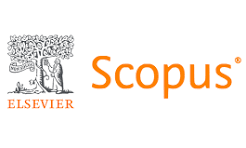PERINATAL OUTCOME OF PATIENTS UNDERGOING CAESAREAN SECTION FOR FETAL DISTRESS
Abstract
Background: Caesarean section is lifesaving procedure, but it also bring drastic outcomes for neonates and mother. This study was designed to assess the perinatal outcomes of patients undergoing caesarean section for fetal distress.
Material & Methods: This was a cross-sectional study conducted at Lady Reading Hospital, Peshawar, from January 01, 2022 to June 30, 2022. All those women (aged 18 to 40 years) who underwent CS due to fetal distress, were included. Normal vaginal birth and CS due to other indications were excluded. SPSS v 26 was used to record and analyze data. A P-value was calculated and <0.05 was kept as significant.
Results: During the study period, 671 deliveries were through caesarean section for fetal distress. The mean age of the patients was 28.25±6.87 years. The majority (33.4%) of the patients were in the age group of 26-30 years. More than half (52.75%) had a history of fresh meconium stain liquor. Perinatal outcomes were measured and most of the cases (644) had A/H, followed by 21 early neonatal deaths, and the rest (6) were stillborn.
Conclusion: Stillbirth and early neonatal mortality were the primary perinatal outcomes. When combined with those of parity and meconium aspiration, these results were statistically significant.
Keywords
Full Text:
PDFReferences
Betran AP, Torloni MR, Zhang JJ, Gulmezoglu AM, Section WHOWGoC. WHO Statement on Caesarean Section Rates. BJOG. 2016;123(5):667-70. https://doi.org/10.1111/1471-0528.13526
Gibbons L, Belizán J, Lauer J, Betrán A, Merialdi M, Althabe F. The Global Numbers and Costs of Additionally Needed and Unnecessary Caesarean Sections Performed per Year: Overuse as a Barrier to Universal Coverage Health Systems Financing. World Health Report 2010. 2010;30.
DHS. Pakistan Demographic and health survey Measures. 2018, available at: https://dhsprogram.com/pubs/pdf/SR257/SR257.pdf
Betran AP, Ye J, Moller AB, Zhang J, Gulmezoglu AM, Torloni MR. The Increasing Trend in Caesarean Section Rates: Global, Regional and National Estimates: 1990-2014. PLoS One. 2016;11(2):e0148343. 10.1371 https://doi.org/10.1371/journal.pone.0148343
Marlow N. The contribution of perinatal asphyxia in the term infant to outcomes in children. J Fetal medicine-basic science clinical practice. 1999;4:1087-1093.
Gravett C, Eckert LO, Gravett MG, Dudley DJ, Stringer EM, Mujobu TB, et al. Non-reassuring fetal status: Case definition & guidelines for data collection, analysis, and presentation of immunization safety data. Vaccine. 2016;34(49):6084-6092. https://doi.org/10.1016/j.vaccine.2016.03.043
Lewis D, Downe S. FIGO consensus guidelines on intrapartum fetal monitoring: Intermittent auscultation. Int J Gynaecol Obstet. 2015;131(1):9-12. https://doi.org/10.1016/j.ijgo.2015.06.019
Low JA. Intrapartum fetal asphyxia: definition, diagnosis, and classification. Am J Obstet Gynecol. 1997;176(5):957-959. https://doi.org/10.1016/S0002-9378(97)70385-5
Gaffney G, Sellers S, Flavell V, Squier M, Johnson A. Case-control study of intrapartum care, cerebral palsy, and perinatal death. BMJ. 1994;308(6931):743-50. https://doi.org/10.1136/bmj.308.6931.743
Oladapo OT, Sotimehin SA, Ayoola-Sotubo O. Predictors of severe neonatal compromise following caesarean section for clinically diagnosed foetal distress. West Afr J Med. 2009;28(5):327-32. https://doi.org/10.4314/wajm.v28i5.55014
Ajah LO, Ibekwe PC, Onu FA, Onwe OE, Ezeonu TC, Omeje I. Evaluation of Clinical Diagnosis of Fetal Distress and Perinatal Outcome in a Low Resource Nigerian Setting. J Clin Diagn Res. 2016;10(4):QC08-11. https://doi.org/10.7860/JCDR/2016/17274.7687
Gangwar R, Chaudhary S. Caesarean Section for Foetal Distress and Correlation with Perinatal Outcome. J Obstet Gynaecol India. 2016;66(1):177-80. https://doi.org/10.1007/s13224-015-0831-5
Haq AIU, Kiyani K, Sadiq N, Bashir S, Shabana NJJoTSoO, Pakistan Go. Perinatal outcome in women undergoing emergency C-section secondary to presumed fetal distress on CTG. J Soc Obstet Gynaecol Pak. 2022; 12(2)78-82.
Hinkle SN, Albert PS, Mendola P, Sjaarda LA, Yeung E, Boghossian NS, et al. The association between parity and birthweight in a longitudinal consecutive pregnancy cohort. Paediatr Perinat Epidemiol. 2014;28(2):106-15. https://doi.org/10.1111/ppe.12099
Kozuki N, Lee AC, Silveira MF, Sania A, Vogel JP, Adair L, et al. The associations of parity and maternal age with small-for-gestational-age, preterm, and neonatal and infant mortality: a meta-analysis. BMC Public Health. 2013;13(3):S2. https://doi.org/10.1186/1471-2458-13-S3-S2
Elias S, Wolde Z, Tantu T, Gunta M, Zewudu D. Determinants of early neonatal outcomes after emergency cesarean delivery at Hawassa University comprehensive specialised hospital, Hawassa, Ethiopia. PLoS One. 2022;17(3):e0263837. https://doi.org/10.1371/journal.pone.0263837
Yang XJ, Sun SS. Comparison of maternal and fetal complications in elective and emergency cesarean section: a systematic review and meta-analysis. Arch Gynecol Obstet. 2017;296(3):503-12. https://doi.org/10.1007/s00404-017-4445-2
Hailegebreal S, Gilano G, Seboka BT, Ahmed MH, Simegn AE, Tesfa GA, et al. Prevalence and associated factors of caesarian section in Ethiopia: a multilevel analysis of the 2019 Ethiopia Mini Demographic Health Survey. BMC Pregnancy Childbirth. 2021;21(1):798. https://doi.org/10.1186/s12884-021-04266-7
Bills CB, Newberry JA, Darmstadt G, Pirrotta EA, Rao GVR, Mahadevan SV, et al. Reducing early infant mortality in India: results of a prospective cohort of pregnant women using emergency medical services. BMJ Open. 2018;8(4):e019937. https://doi.org/10.1136/bmjopen-2017-019937
Desai D, Chauhan K, Chaudhary S. A study of meconium stained amniotic fluid, its significance and early maternal and neonatal outcome. J International Journal of Reproduction, Contraception, Obstet Gynecol 2013;2(2):190-194. https://doi.org/10.5455/2320-1770.ijrcog20130616
Mohammad N, Jamal T, Sohaila A, Ali SR. Meconium stained liquor and its neonatal outcome. Pak J Med Sci. 2018;34(6):1392-96. https://doi.org/10.12669/pjms.346.15349
Onah HE, Ibeziako N, Umezulike AC, Effetie ER, Ogbuokiri CM. Decision - delivery interval and perinatal outcome in emergency caesarean sections. J Obstet Gynaecol. 2005;25(4):342-46. https://doi.org/10.1080/01443610500119671
Chukwudi OE, Okonkwo CA. Decision - delivery interval and perinatal outcome of emergency caesarean sections at a tertiary institution. Pak J Med Sci. 2014;30(5):946-950. https://doi.org/10.12669/pjms.305.5470
MacKenzie IZ, Cooke I. What is a reasonable time from decision-to-delivery by caesarean section? Evidence from 415 deliveries. BJOG. 2002;109(5):498-504. https://doi.org/10.1111/j.1471-0528.2002.01323.x
DOI: https://doi.org/10.46903/gjms/21.01.1214
Refbacks
- There are currently no refbacks.
Copyright (c) 2023. Mahnaz Raees, Laila Zeb

This work is licensed under a Creative Commons Attribution-NonCommercial 4.0 International License.

Gomal Medical College, Daraban Road, Dera Ismail Khan, Pakistan
ISSN: 1819-7973, e-ISSN: 1997-2067
Website: https://www.gmcdikhan.edu.pk
Phone: +92-966-747373


